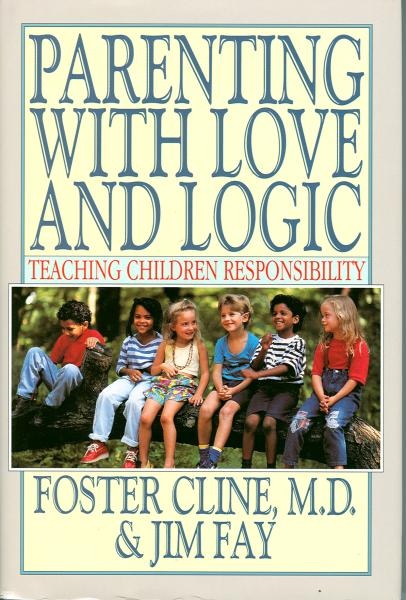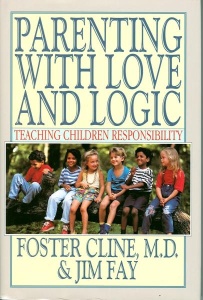
Pearl 29 – Sassing and Disrespect
- Remember that when there is much emotion coming from your child, the best way to defuse is to suggest without emotion that he go somewhere else until he is calm. Sometimes it takes repeated suggestions for him to leave.
- Once both are calm, try to find out what is bothering him. You may suggest possible reasons and see if anything fits his situation. P. 192-194
Pearl 30 – Sibling Rivalry and Fighting
- Unless there is danger, parents should allow siblings to work out their differences.
- Attaching a consequence to fighting (such as cleaning behind the refrigerator with a toothbrush), can stop fighting in its tracks. P. 195-197
Pearl 31 – Spanking
- Use spanking as a last resort for “Basic German Shepherd” issues.
- Use spanking for your child who is under three years old.
- Use spanking only in a painful way.
- Use spanking only if you can do it without speaking any angry words. (no emotion as reward)
- Use spanking only if you can do it guilt free. (no emotion as reward)
- Use spanking as a choice – “Would you like to go to your room with a smack or no smack? ….with one or two…etc.” Do not carry child to room. Make him make the choice. P. 198-1
Pearl 32 – Stealing
- For early stealing as part of a stage, don’t reward it with emotion, rather reward with emotion the act of putting it back where it belongs. “Janice, honey, Mommy doesn’t like it when you take her earring. Now, take it back to the box. Thank you. (Then, very excitedly) Oh, thank you for putting it back. That makes Mommy so happy. What a good girl.”
- For chronic stealing – avoid it becoming a power struggle – find out the underlying cause or causes. Use sensible, not emotional consequences. P. 200-201.
Pearl 33 – Swearing and Bad Language
- Move the problem away by saying something like, “I’ll be happy to talk with you when you can speak civilly to me and use clean and mature language.”
- When both are calm, you might suggest that people use that type of language if they don’t feel good about themselves or if they don’t have a good vocabulary.
- Then drop the subject. Usually the problem will go away. P. 202-203
Pearl 34 – Teacher and School Problems
- Rather than going to the school with an attitude, approach the teacher with your “description” of the situation at home and get the teacher’s description of the situation at school.”
- If the situation is not resolved with the teacher ask the teacher if she would go with you to the principal to see if he has some additional insight. P. 204-205
Pearl 35 – Teeth Brushing
- Modeling and talking to self or spouse goes farther than direct commands: “I just finished eating, and I think I will protect my teeth from cavities by brushing.”
- Or a mom may say, “I pass out things with sugar in them to people who protect their teeth by brushing. … Noelle’s been brushing….Jill’s been brushing…and Claudia, well Claudia we’d better hold off on cookies until I don’t have to worry about your teeth anymore…” p. 206-207
Pearl 36 – Telephone Interruptions
- When on the phone, the best way to get a child to stop bothering you, is to ask the caller to hold on a minute, ask the child to go to his room and if the child is not compliant ask the caller if you can call right back.
- At another time, help the child understand that you can spend more time with him when you are not on the phone. P. 208-210
Pearl 37 – Television Watching
- Recognizing that too much TV watching is harmful is the first step.
- Parents must model controlled use of the TV.
- Talking with the child about what watching can do and what it cannot do is helpful.
- Encourage other activities, especially those you do with your child and those that provide physical activity in the out of doors.
Pearl 38 – Temper Tantrums
- We usually have some warning – big frown, flushing of face, balled up fists, lips twitching.
- Remember “One, any kid worth keeping will probably throw a fit from time to time.
- “Two, kids will through tantrums only as long as they work.
- Whatever conversation during the tantrum from the parent MUST be free of emotion.
- Some parents may want to rate the tantrum as if it were a sporting event – without emotion.
- During this non-emotional conversation give the child choices: In basement or room? ; With light on or off?
- The goal is to remove the child from your audience – without an audience the tantrum stops.
- Another way to distance yourself is to take a wide giant step OVER your child as you leave. P. 214-215
Pearl 39 – Toilet Training
The facts:
- Some children really train themselves and it is easy.
- Some children are really difficult to train.
- All children develop at their own rate – some are ready at two and others not until 4 ½.
- Keep the toilet training mood fun, exciting – even gleeful.
- “It is all too easy for a vicious cycle of negativism to swirl up and around toilet training because we have a vested interest in their potty habits. We really do want them to go into the pot. For the first time in their lives, we really want them to do something for us.”
- Suggestions:
- Avoid, “you sit there until you go routine…”
- With girls, the mom and draw pictures and talk about how the kitty and the dog do their business and how happy they are. Then model how happy it is to do as humans do. Allow the child the opportunity when she asks.
- With boys, the dad can make PT boats and battleships (out of toilet paper) and demonstrate how to take aim and sink. Boys will want to follow suit. P. 217-219
Pearl 40 – Values: Passing Them on to Your Kids
- Bad news: More difficult than before
- Good news: still possible
- “Eavesdrop value setting:” Allowing children to overhear conversation between parents – one telling the other how he/she had showed integrity and did what was right and “feeling good” about it.
- Modeling how we spend our time when not required to work. P. 220-222
Pearl 41 – Whining and Complaining
- Children will whine and complain as long as it gets them what they want.
- At another time, explain that when you ignore them it is because you don’t want to hear unless they speak appropriately.
- Give multiple choice: “Do you suppose I’ll be able to understand you better when you’re whining or not-whining?” p. 223-224




